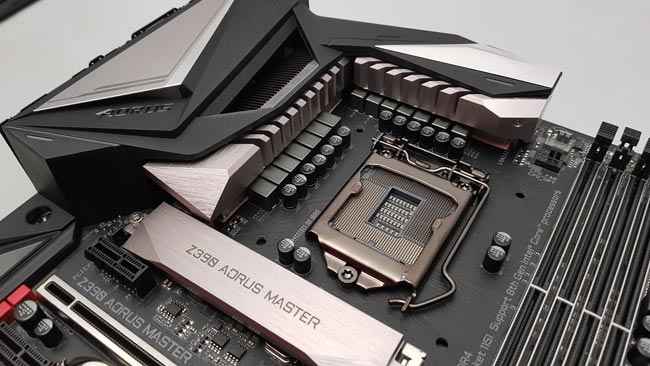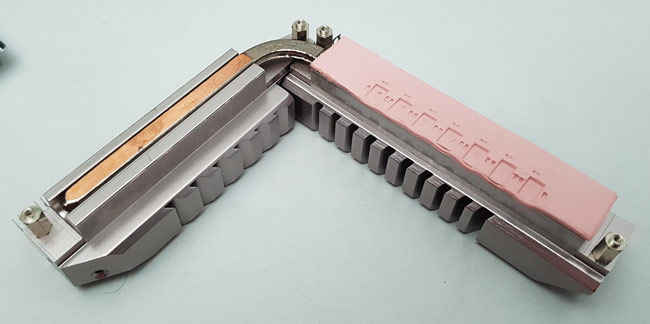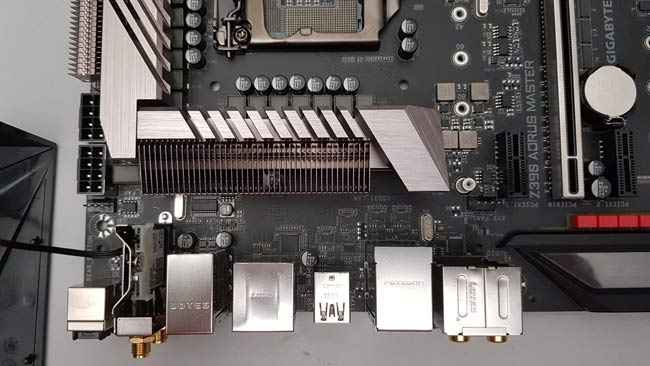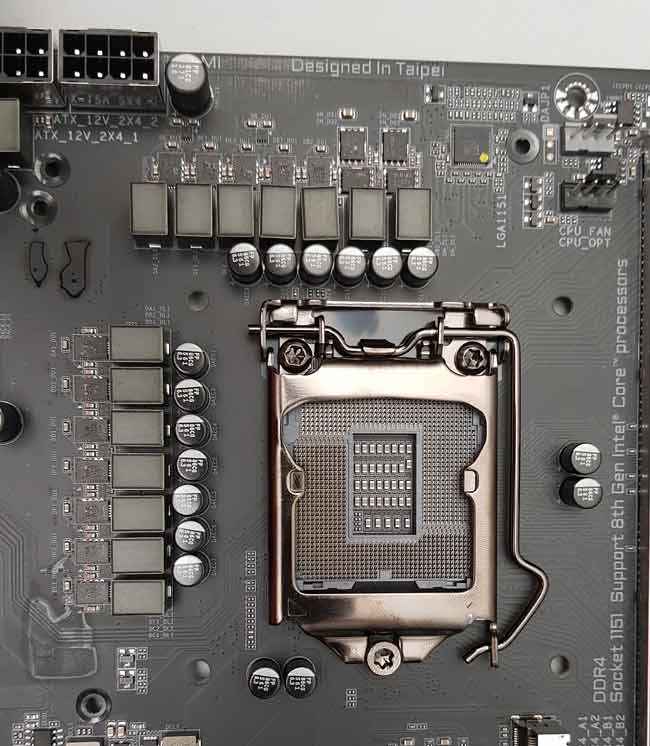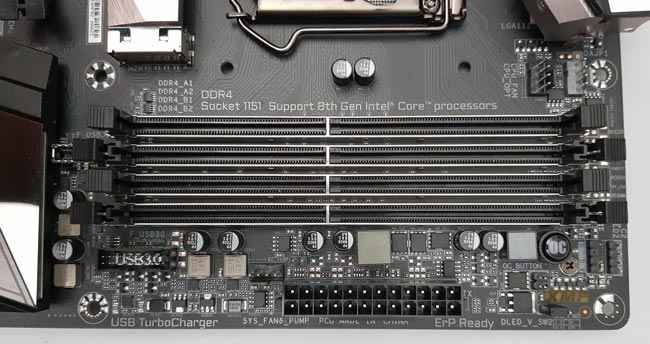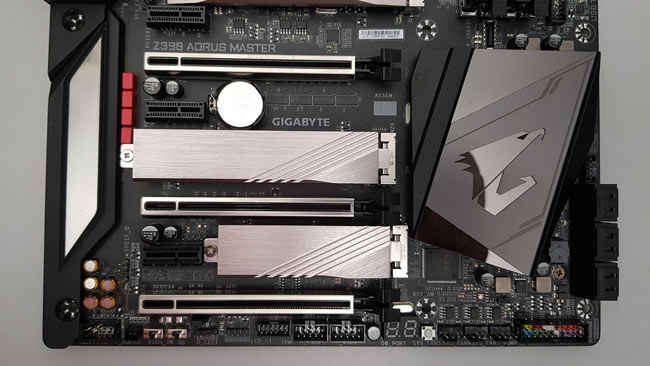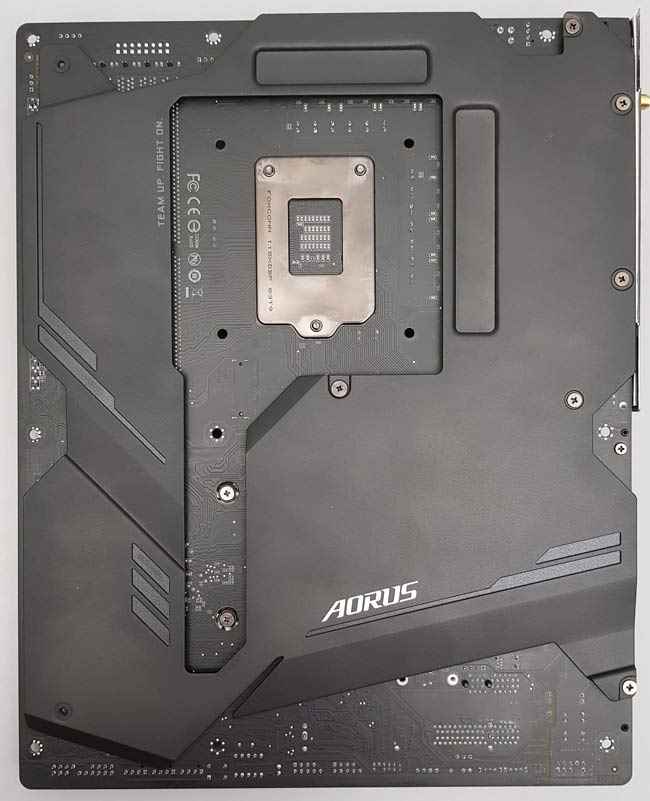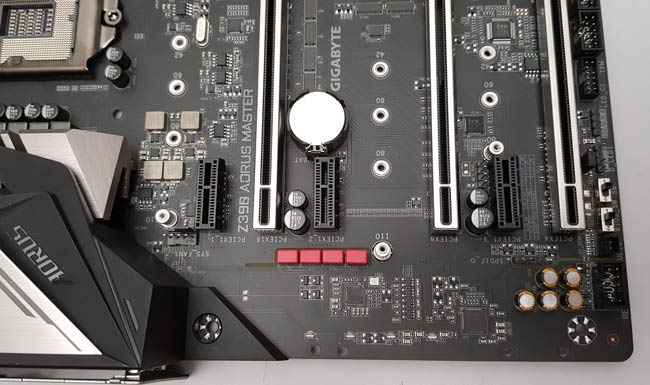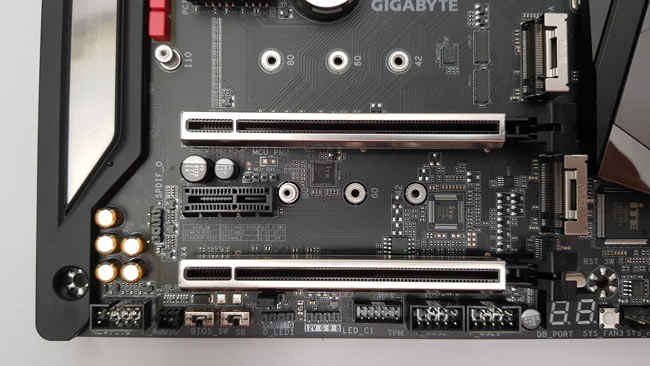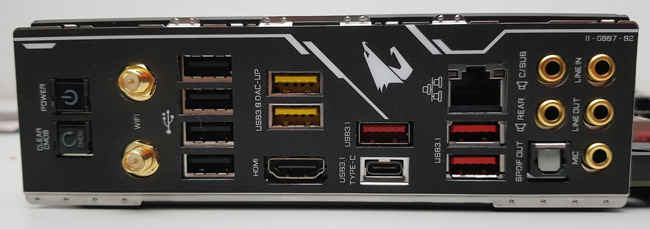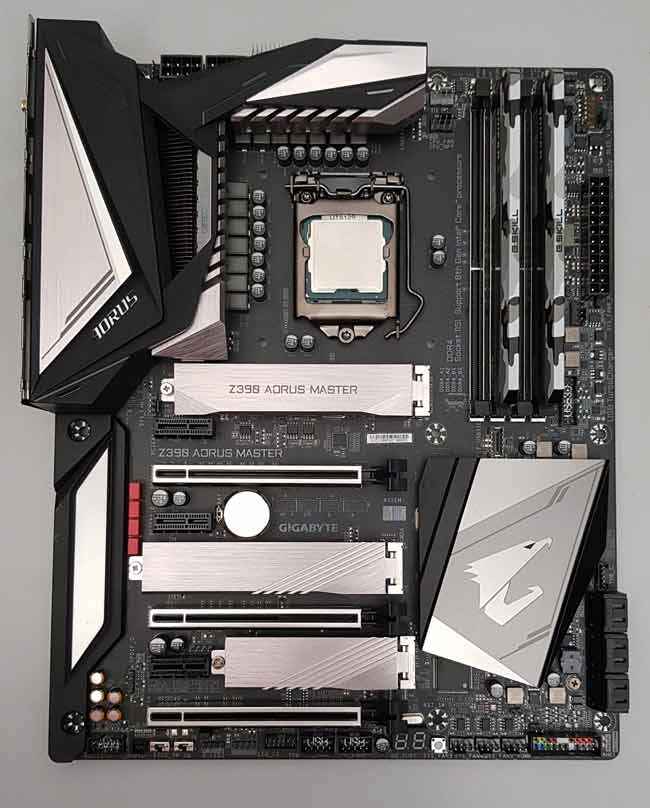GIGABYTE Z390 AORUS MASTER Review : Geared to power Intel’s 8-core beasts
GIGABYTE Z390 AORUS MASTER is a really well-built motherboard that’s designed to make the most of the newly launched 9th Gen Intel CPUs. While we weren’t able to push the CPU much right now, we believe that should change with time as newer BIOS updates are rolled out. This is the case with all platforms. However, what needs to be highlighted is the amount of attention paid to the VRM circuitry and the cooling. So the hardware capabilities are already in place, the software needs a bit more tweaking. As for the aesthetics, we have begun to see less flash and more class, there are fewer RGB elements on the board but should you need more, they’ve made headers available for the same. The pricing of the board seems to be quite a bit, especially since we’ve seen such configurations in previous generations for a lot lesser. Perhaps, it’s the weakened Rupee or perhaps the US sanctions are to blame. Overall, we’re looking at a really well-built and featured packed motherboard from GIGABYTE in the Z390 AORUS MASTER.
One of the key features of the new Core i9 9900K processor is that all eight cores can operate at 5GHz. For this to happen, the motherboard has to sport a really good VRM. So does the GIGABYTE Z390 AORUS MASTER check all the boxes? Let’s find out.
Packaging
GIGABYTE has retained the fiery orange and black dominated colour palette for the GIGABYTE Z390 AORUS MASTER. There’s not a lot of marketing mumbo jumbo on the box except for the backside of the packaging. You can prominently see that GIGABYTE is highlighting the VRM, built-in Wi-Fi, RGB lighting and the M.2 heatsinks.
Specifications
To view the detailed specification list for different versions of the motherboard, please refer to GIGABYTE’s official website.
| CPUs Supported | 8th/9th Gen Core i3, i5, i7, i9, Pentium, Celeron |
| Socket | LGA1151 |
| Memory Supported | 4 x DIMM, Max. 64 GB, up to DDR4-4266(OC) |
| Chipset | Intel Z390 |
| VRM Design | CPU: 12 Phase |
| RAM: 2 Phase | |
| BIOS | AMI UEFI Dual BIOS with 2x 128 Mb Flash ROM |
| Expansion | 3 x PCIe 3.0 x16 slot (x16, x8 and x4) |
| 3 x PCIe 3.0 x1 slots | |
| Storage | 6 x SATA 6.0 Gb/s (supports RAID 0/1/2/10) CPU |
| 3 x M.2 slots (PCIe 3.0 x4 and SATA 6 Gb/s) (2x 22110, 1x 2280) | |
| Networking | LAN: 1x Intel I219-V GbE LAN |
| WLAN: 1x Intel 9560 802.11ac 2×2 | |
| I/O | 4 x USB 3.1 ports Gen 2 (3x Type-A, 1x Type-C) |
| 8 x USB 2.0 ports (4 via Header) | |
| 4 x USB 3.1 ports Gen 1 (2x Type-A, 2x headers) | |
| 2 x SMA Antenna connectors | |
| 5 x Audio jacks | |
| 1 x DVI-D | |
| 1 x HDMI port | |
| 1 x S/PDIF OUT Header | |
| 1 x Clear CMOS Jumper | |
| 1 x Thunderbolt Header | |
| Audio | Realtek ALC1220-VD2 7.1 Channel High Definition Audio CODEC |
| Fan headers | 6 x 4-pin PWM |
| 2 x 4-pin PWM for Liquid cooling (High Current) | |
| Form Factor | ATX Form Factor (305 mm x 244 mm) |
| Miscellaneous Features | Support for APP Center 3D OSD @BIOS AutoGreen Cloud Station EasyTune Easy RAID Fast Boot Game Boost Platform Power Management RGB Fusion Smart Backup Smart Keyboard Smart TimeLock Smart HUD System Information Viewer Smart Survey USB Blocker USB DAC-UP 2 USB TurboCharger Support for Q-Flash Support for Xpress Install |
Package contents
Given that the GIGABYTE Z390 AORUS MASTER is a fairly high-end board, they do ship quite a few accessories with it. Most of them are essentials and there are hardly any freebies in the box. There are two thermistors included, which should interest the enthusiasts.
Here’s the list of the entire contents of the box.
- Motherboard
- User Manual
- Rear I/O panel (Already attached)
- 4 x SATA cables
- Driver disk
- 2x SATA cable labels
- Certificate of Reliability
- 2x M.2 Screw + Standoff
- Quick installation guide
- 1x Wi-Fi Antenna
- G-Connector
- SLI Bridge
- 2x Thermistor cables
- 1x Velcro Cable ties
- 2x Digital LED strip adapter cables
- 1x RGB LED strip extension cable
Board layout
The GIGABYTE Z390 AORUS MASTER is a fully fledged ATX board. Straight off the bat, we see a fairly crowded CPU area. At first glance, the chokes for all the power phases stand immediately stand out. The new heatsinks are also a welcome change. There shouldn’t be any heatsink compatibility issues since mounting mechanisms follow standards and generally have a spacer which allows for a bit of clearance on the underside of the cooler. However, if you’ve gone for a cheap aftermarket cooler, then all bets are off.
The heatsink isn’t simply a huge chunk of aluminium. Because the new 9th Gen CPUs are a power hungry lot, the VRMs do have to sweat it out a bit. Subsequently, we see a thermal pipe on the underside of the heatsink and it makes direct contact with the MOSFETs.
That’s not all. When you remove the plastic shroud that sits on top, you get to see a nice arrangement of thick fins. These aren’t the flimsy ones that bend to the touch. This extra attention to the VRM cooling is an indicator for how much power the 9th Gen CPUs are designed to draw. It’s good to see actual heatsinks make a comeback now that the CPU wars have reignited. We’re going to see less flash and more substance in subsequent generations.
The GIGABYTE Z390 AORUS MASTER makes use of a 12-phase VRM for the CPU. You can see the 12 IR3553 MOSFETs that it uses in conjunction with 6 IR3599 Phase Doublers. Each of the IR3553 is capable of handling 40 amperes so with 12 phases, the VRM can easily handle high overclocks for longer duration.
Since we’re harping on about the power delivery mechanism, we might as well point out the ATX 12V CPU connectors in the top left. Both happen to be 8 PIN connectors and the sockets themselves have a metal shield that’s soldered to the board. Let us remind you that this is a mainstream desktop board and not an HEDT board. Spreading the power delivery over eight 12V pins should significantly reduce the heat generated in the wire when the CPUs are not OCed.
Coming to the RAM slots, the GIGABYTE Z390 AORUS MASTER makes use of slots with release levers on both sides. Moreover, there isn’t much RGB in this area. That’s a good thing. Previous gen motherboards had a vertical strip running along the right edge of the board (bottom here) and there would be a strip between the RAM slots so you’d still get the disco action even if your RAM DIMMs weren’t RGB. GIGABYTE now has RGB RAM kits, so using that in conjunction with the older boards was flashier than 1980’s Bollywood movies. Coming back to the topic at hand, we see a USB 3.0 header and a few fan headers in this region. Also, the memory seems to have just two power phases by the looks of it. This is a fairly standard configuration.
Coming to the expansion slots, all three PCIe x16 slots on the board come with reinforced shielding. They add to the durability if implemented well. In this case, the metal shielding is soldered via a through hole mount, so these are fine in our books. The slots are interspersed with M.2 mounts. You have three M.2 x4 PCIe mounts on the board. The first two can fit 110mm cards while the third slot is relegated to 80mm cards. The first M.2 slot is situated above the primary x16 PCIe slot. So there’s no way you’re going to see it go to waste. As for the bandwidth sharing between the slots, the following configurations are possible:
x16 + x0 + x4
x8 + x8 + x4
The third x16 PCIe slot shares bandwidth with the M.2 (P) port so it will be pulled down to x2 from x4 if that M.2 slot is populated.
Oddly enough, the user manual does not have the bandwidth sharing table in the section pertaining to PCIe ports.
The rear side of the board has a massive metal shield that covers most of the board except for the CPU cutout area. The vertical and horizontal sections near the CPU that appear debossed actually make contact on the underside of the VRM. So these act as passive heatsinks as well.
As for the audio part, we don’t see any of the “isolated” section of the motherboard for the audio codec and DAC. That’s either a testament to the filtering capacitors or the fact that current gen audio ICs have plenty of shielding and don’t benefit much from isolation or shielding. There’s no point pandering to audiophiles since they’re going to get an external DAC anyway. The GIGABYTE Z390 AORUS MASTER uses a RealTek ALC1220-VB for the codec and is supplemented with an ESS Sabre 9118 DAC. GIGABYTE has also paid attention to the oscillator which is one of the primary components in an audio system. In this case, they’ve used a crystal oscillator by TXC.
The bottom edge has the usual set of USB 2.0, TPM, fan and Front Panel headers. The ARGB headers are also down here.
The positioning of the debug LEDs down here is a bit non-traditional but this spot is clearly visible and we find it quite convenient as well. The front panel header is colour coded as usual and GIGABYTE does include a G-connector to make this easier for the users. For those who don’t know what a G-connector is, it’s simply an extension that you connect your cables to. Connecting the front panel cable directly to the board can be quite cumbersome and these little things do make a difference.
The rear I/O panel comes attached to the motherboard. You need to remove the back shield and the plastic shroud around the I/O are to finally get to the rear I/O panel. The good thing here is that the audio connectors appear to be gold plated. The SMA connectors too are gold plated but that’s usually the norm. There are 4x USB 2.0 ports, 3x USB 3.1 Gen 2 ports and the remainder being Gen 1 ports. You don’t have any display ports aside from the 1 HDMI. Given that anyone getting such an expensive motherboard will probably get a beefy graphics card, this is fine with us. Putting a power switch on the rear seems to be an odd decision.
Most folks blindly attempt to plug in USB devices on the rear and having a Clear CMOS or power button in this area is going to take some getting used to. You might accidentally trigger them a few times before getting acclimated to their presence.
The inclusion of USB 3.1 and WLAN are the primary differentiators between the Z390 and Z370 motherboards. However, only a portion of the USB 3.1 or WLAN circuitry has been embedded onto the platform, so you still need a Companion RF module such as the 9650 NGW card that we see here. Frankly, the plastic shroud over the rear I/O does make it seem aesthetically pleasing but they could have easily done without it and helped with some additional lateral airflow on to the fin array.
Overall, the GIGABYTE Z390 AORUS MASTER is a pretty feature rich motherboard with little to no misgivings. The focus on an improved VRM system to incorporate the new and power-hungry Intel chips are clearly visible. The Z390 platform’s decision to have native WLAN and USB 3.1 has also been taken advantage of.
BIOS
The BIOS on the Z390 AORUS MASTER seems the same as the Z370 boards.However, the companion apps that allow you to access the different features from within the OS seem a bit dated. Given all the different UI assets available right now, reworking this to be more consumer friendly shouldn’t be an issue.
Conclusion
GIGABYTE Z390 AORUS MASTER is a really well-built motherboard that’s designed to make the most of the newly launched 9th Gen Intel CPUs. While we weren’t able to push the CPU much right now, we believe that should change with time as newer BIOS updates are rolled out. This is the case with all platforms. However, what needs to be highlighted is the amount of attention paid to the VRM circuitry and the cooling. So the hardware capabilities are already in place, the software needs a bit more tweaking. As for the aesthetics, we have begun to see less flash and more class, there are fewer RGB elements on the board but should you need more, they’ve made headers available for the same. The pricing of the board seems to be quite a bit, especially since we’ve seen such configurations in previous generations for a lot lesser. Perhaps, it’s the weakened Rupee or perhaps the US sanctions are to blame.
Overall, we’re looking at a really well-built and featured packed motherboard from GIGABYTE in the Z390 AORUS MASTER.
Mithun Mohandas
Mithun Mohandas is an Indian technology journalist with 14 years of experience covering consumer technology. He is currently employed at Digit in the capacity of a Managing Editor. Mithun has a background in Computer Engineering and was an active member of the IEEE during his college days. He has a penchant for digging deep into unravelling what makes a device tick. If there's a transistor in it, Mithun's probably going to rip it apart till he finds it. At Digit, he covers processors, graphics cards, storage media, displays and networking devices aside from anything developer related. As an avid PC gamer, he prefers RTS and FPS titles, and can be quite competitive in a race to the finish line. He only gets consoles for the exclusives. He can be seen playing Valorant, World of Tanks, HITMAN and the occasional Age of Empires or being the voice behind hundreds of Digit videos. View Full Profile

